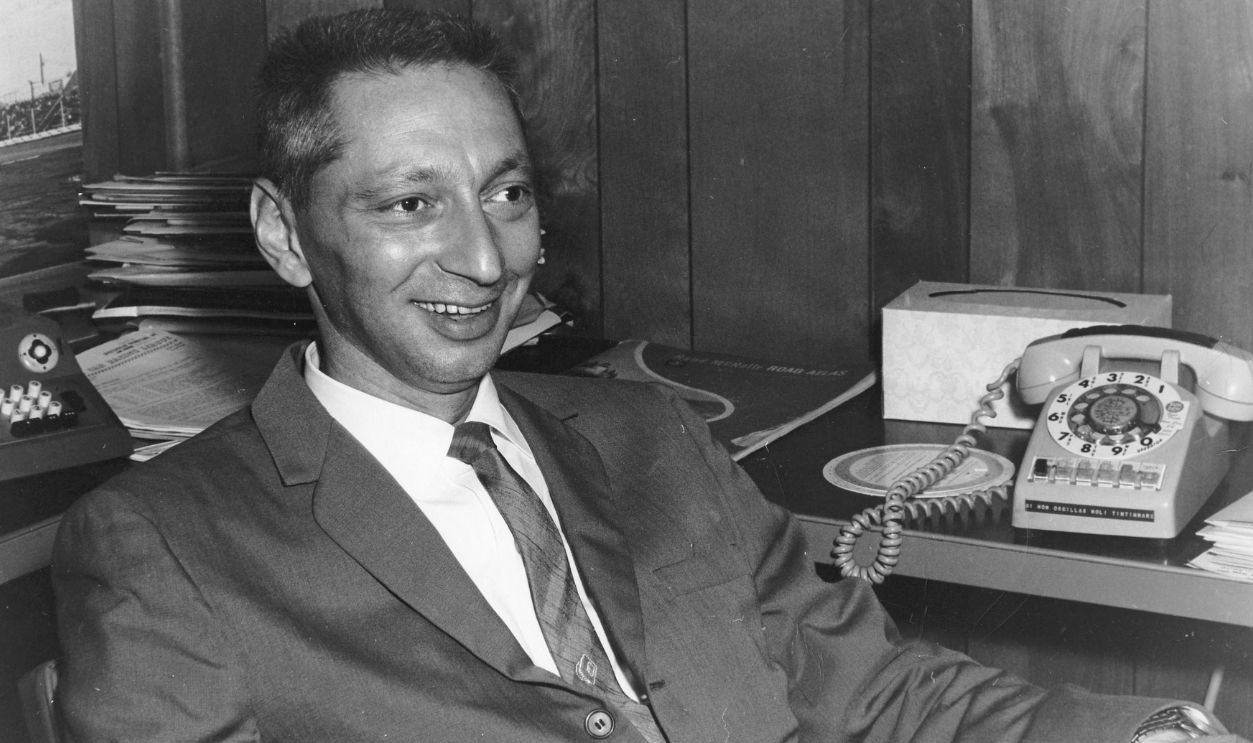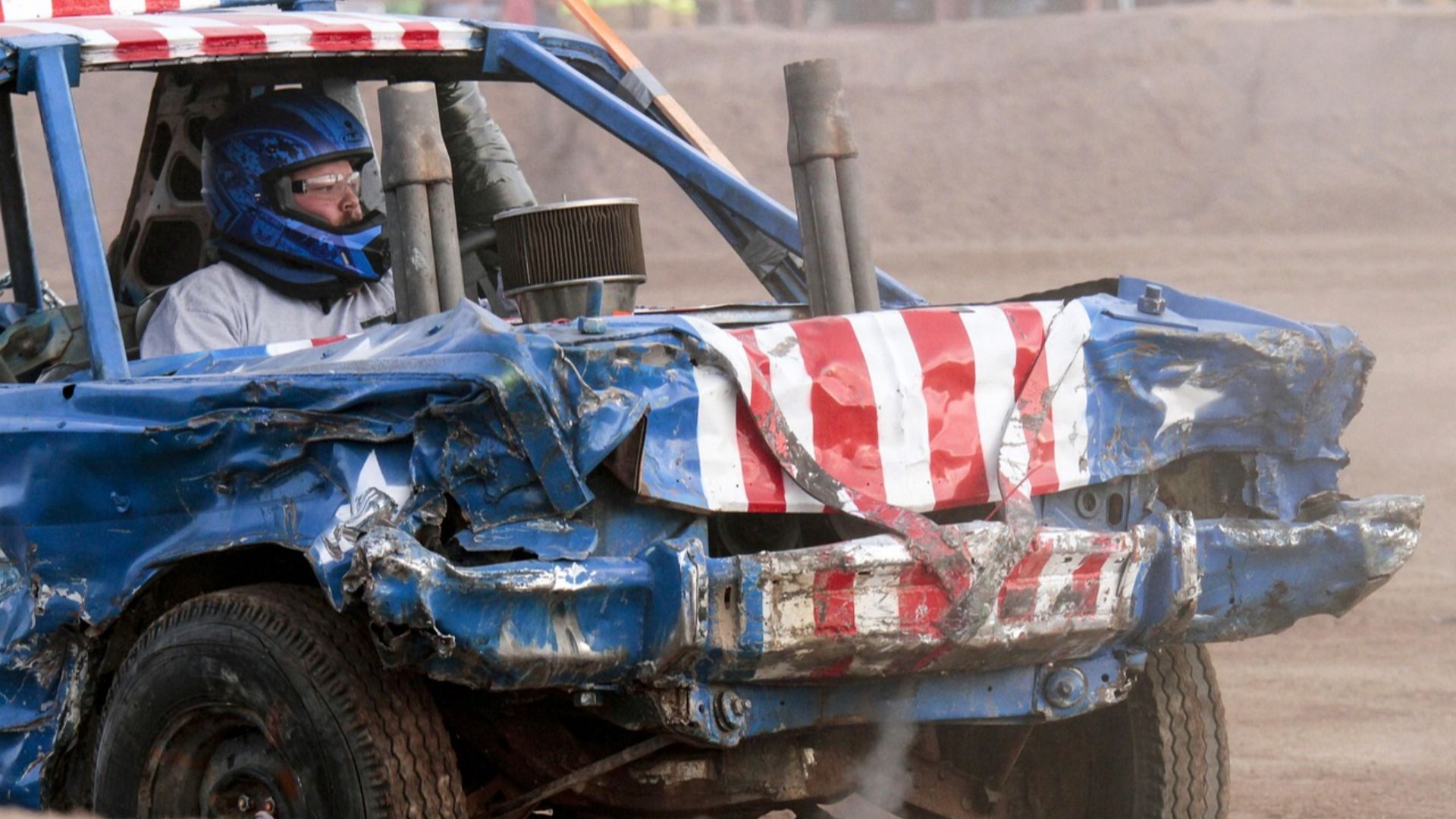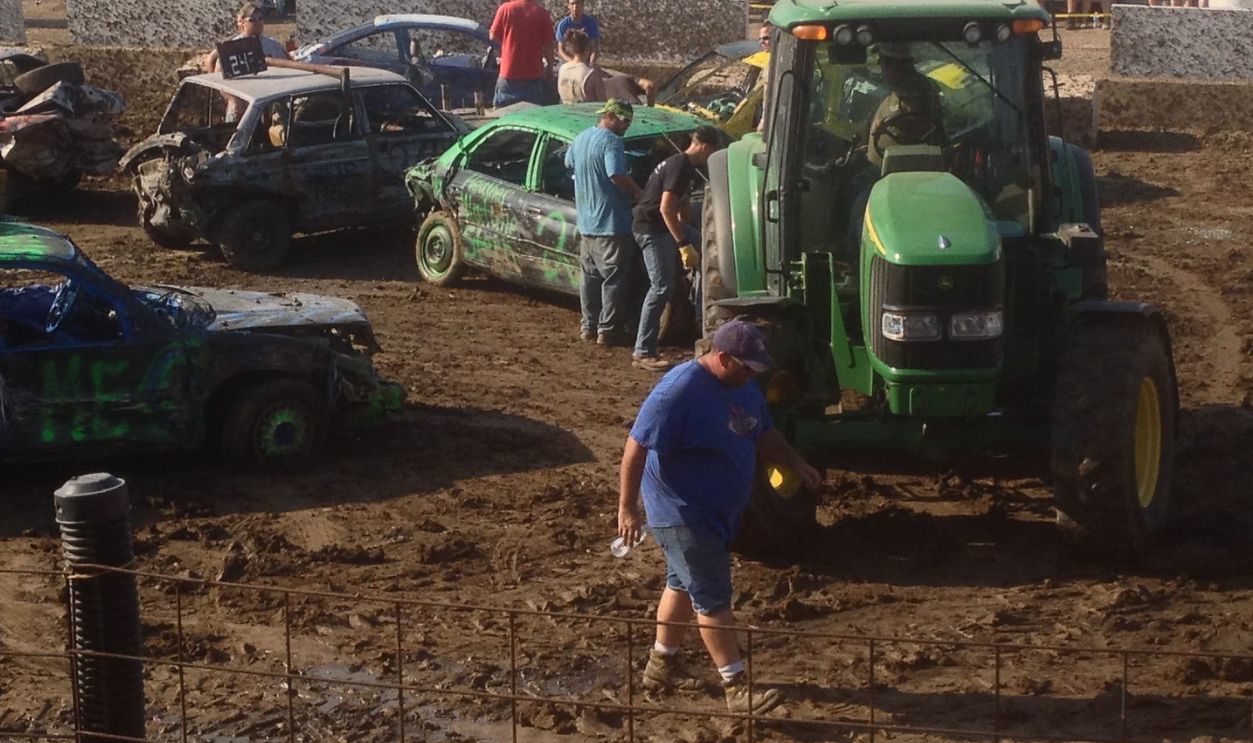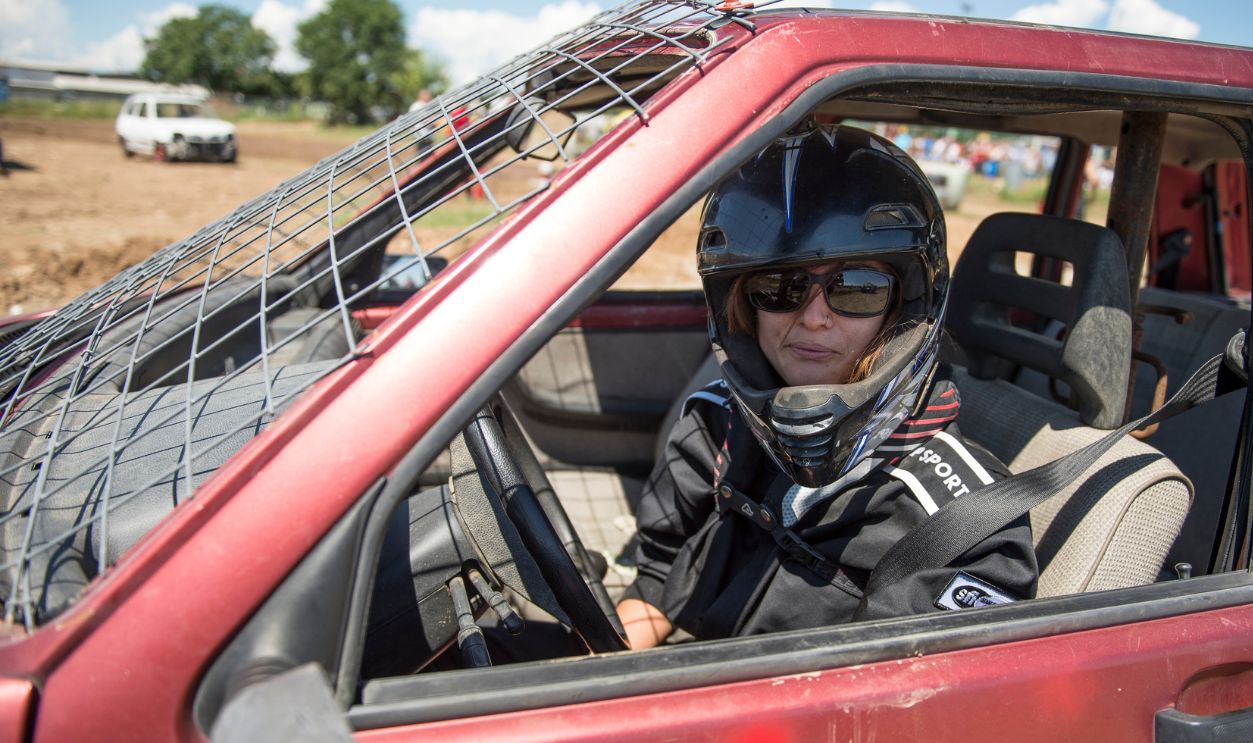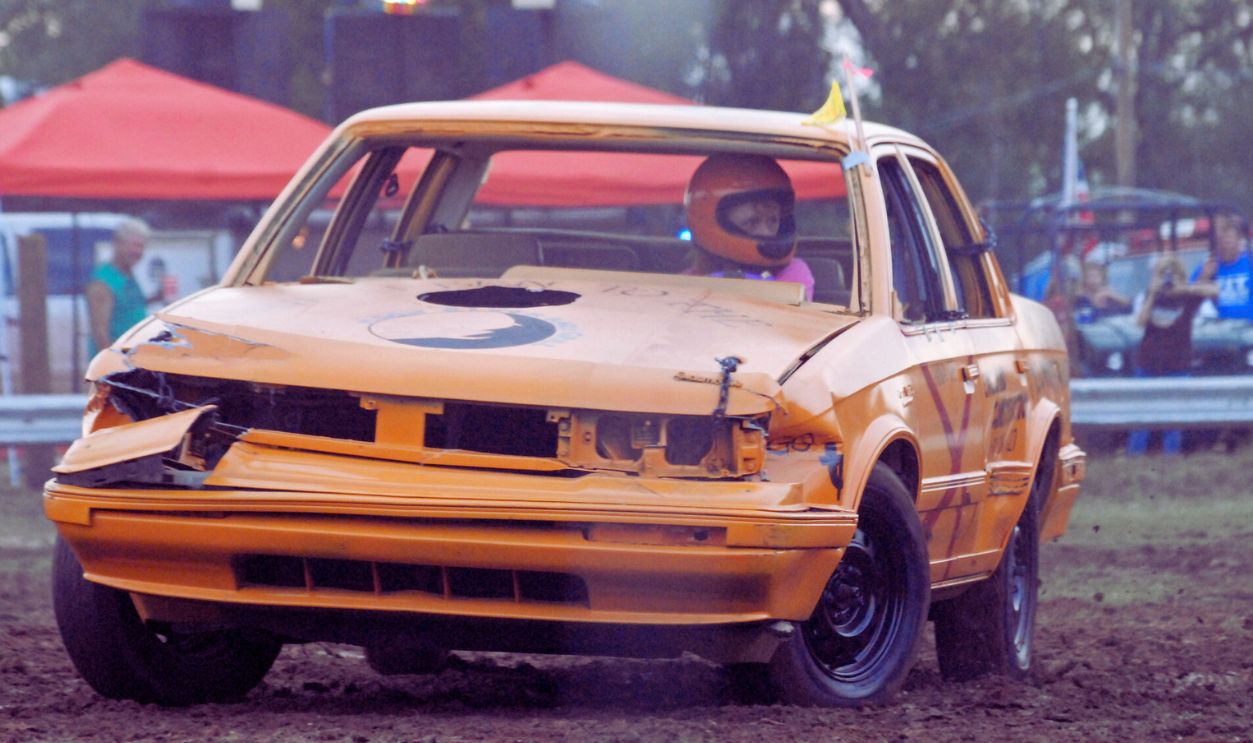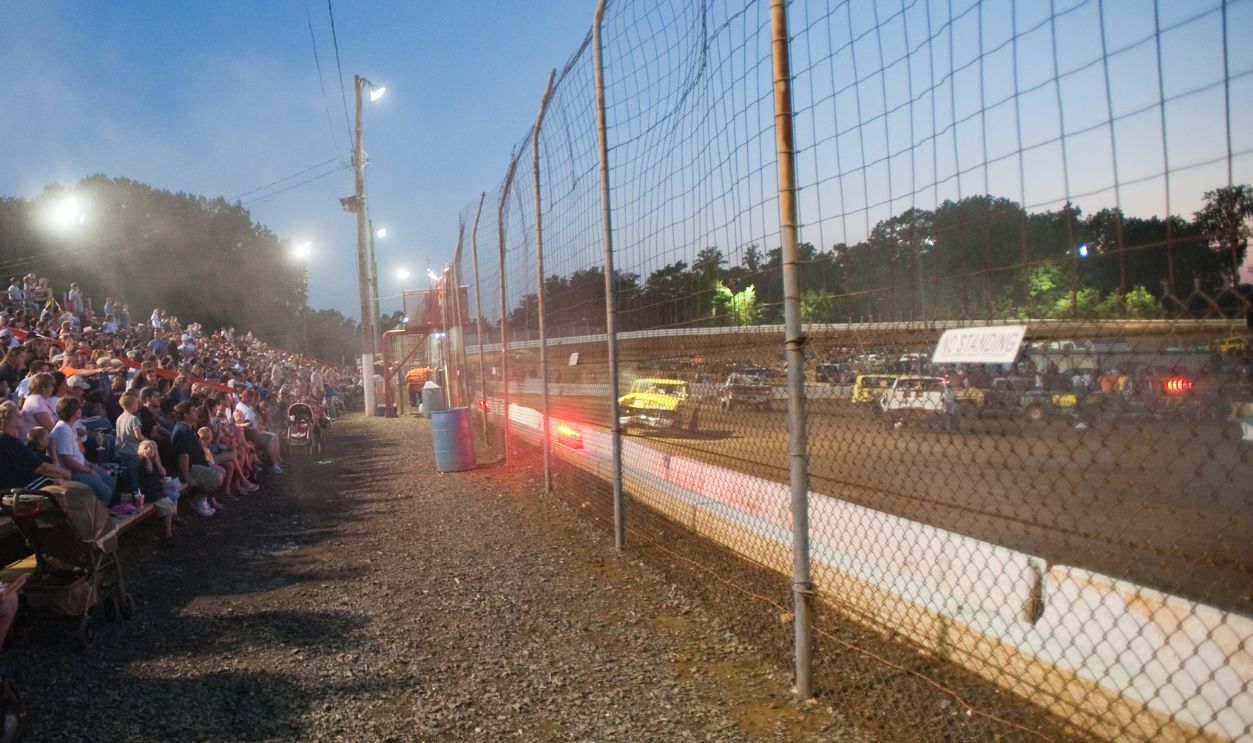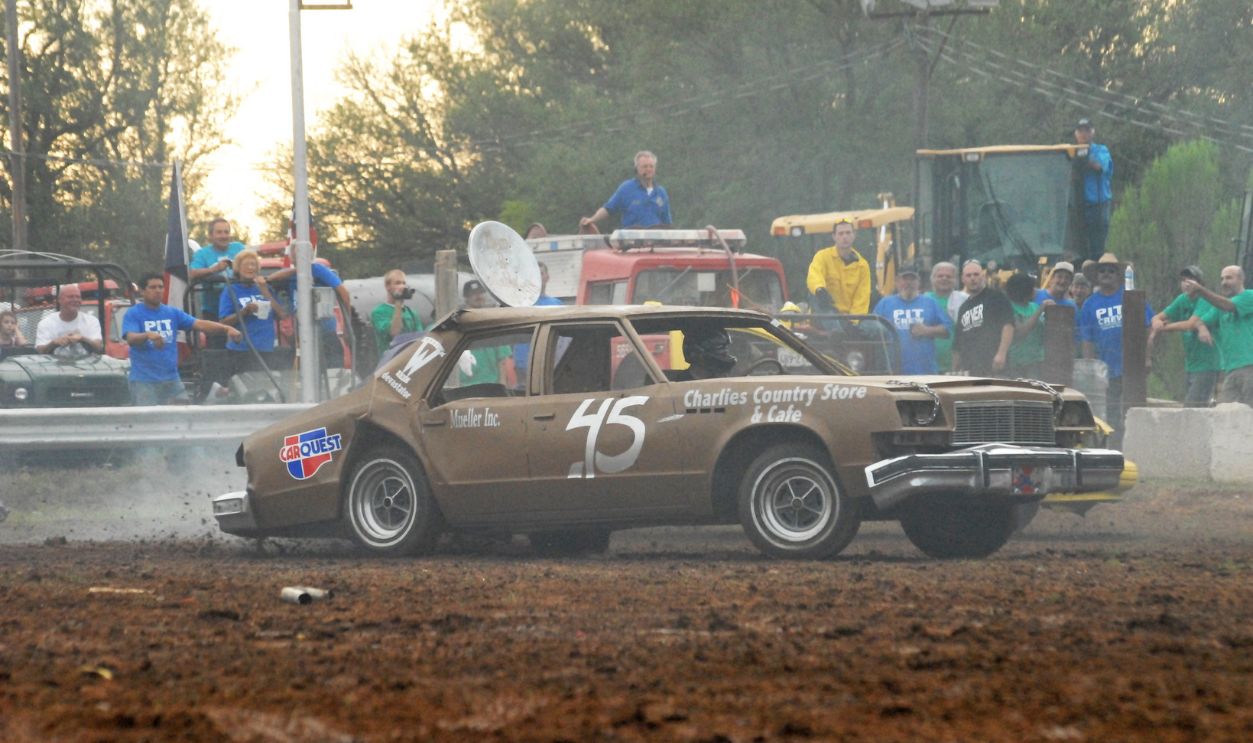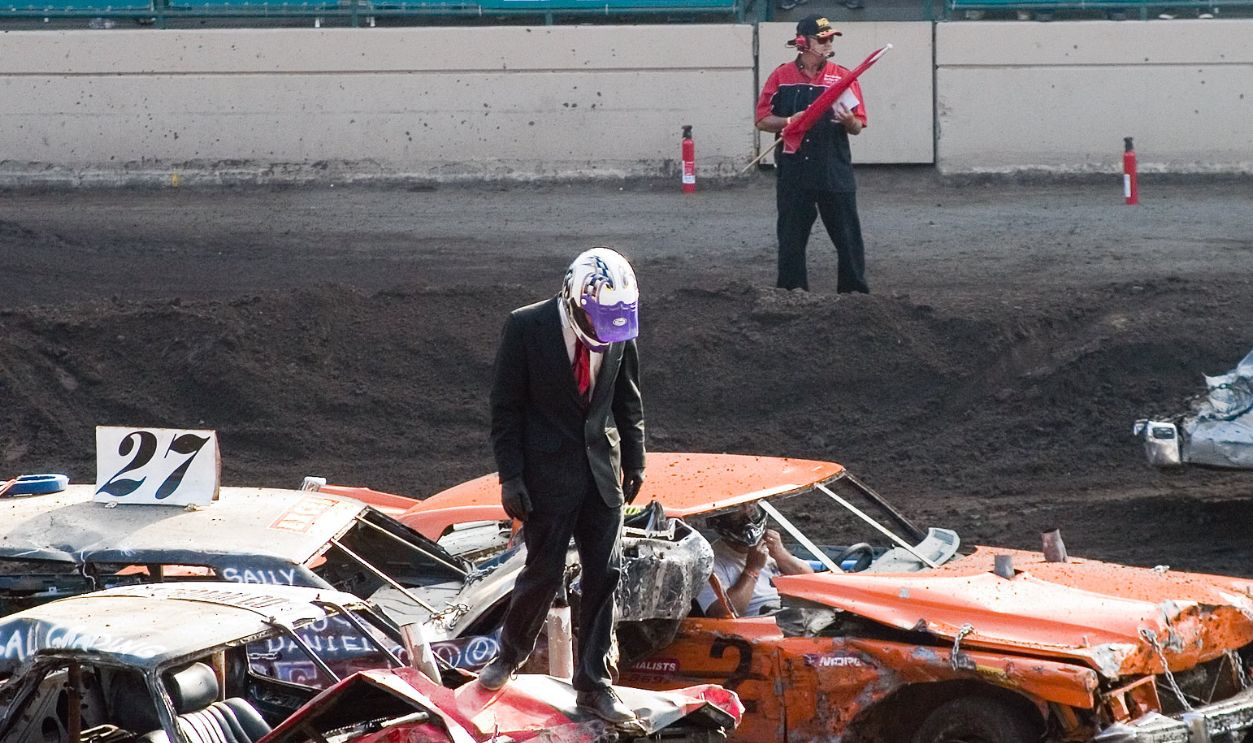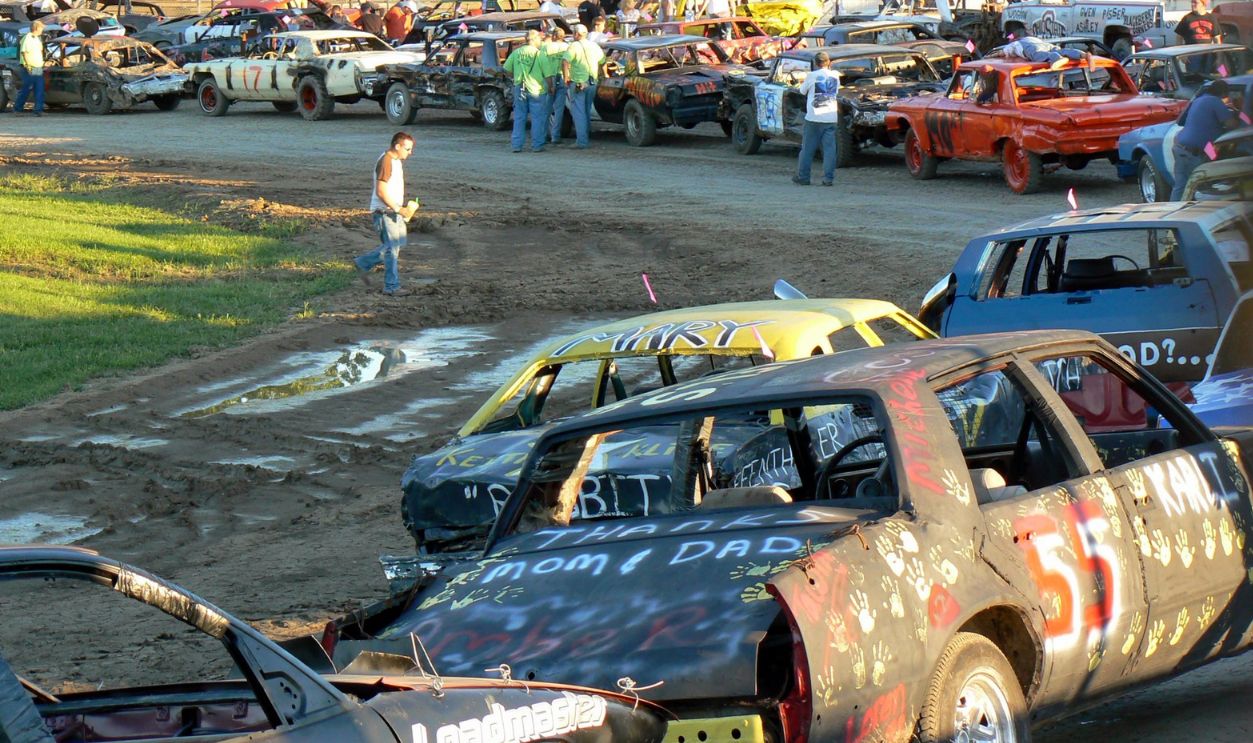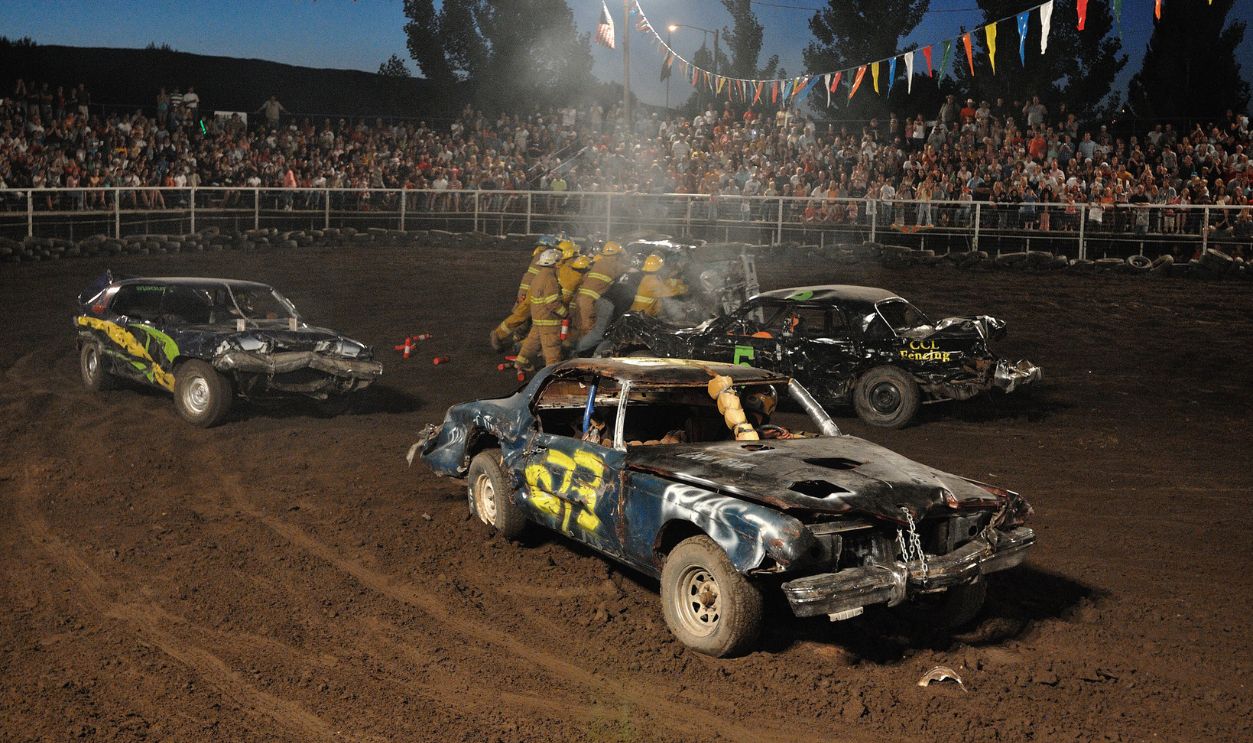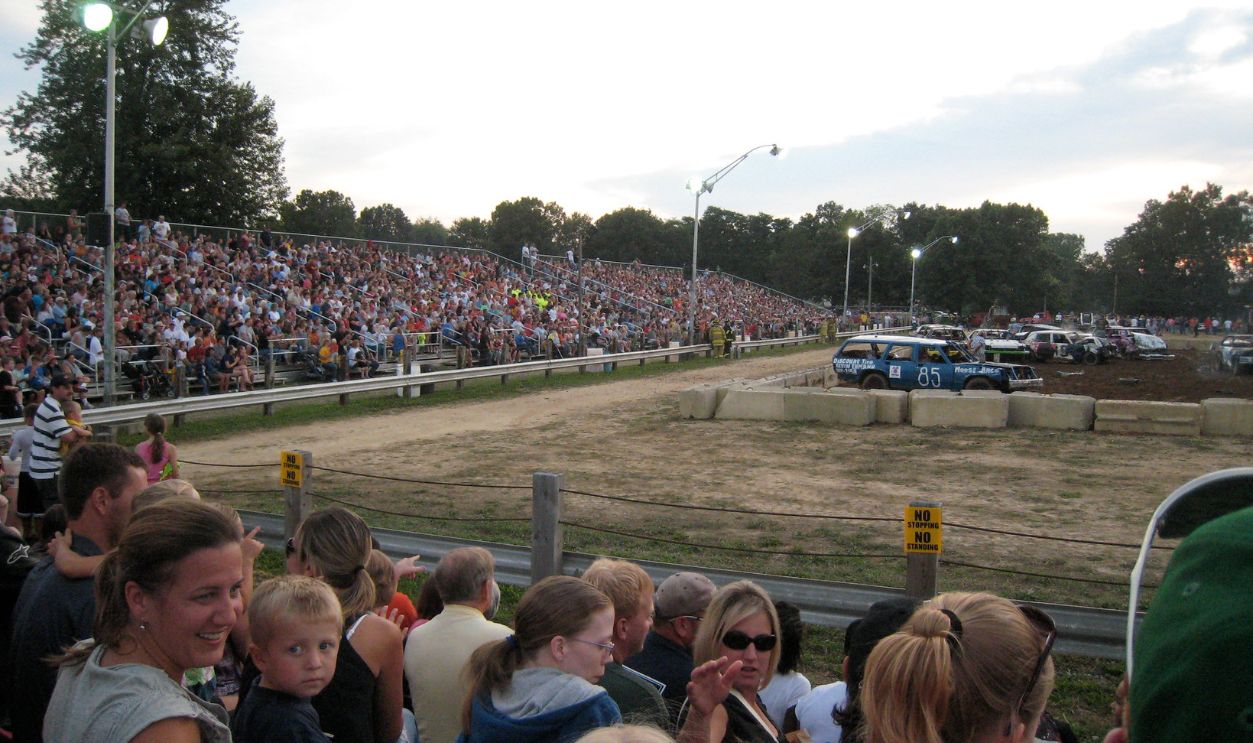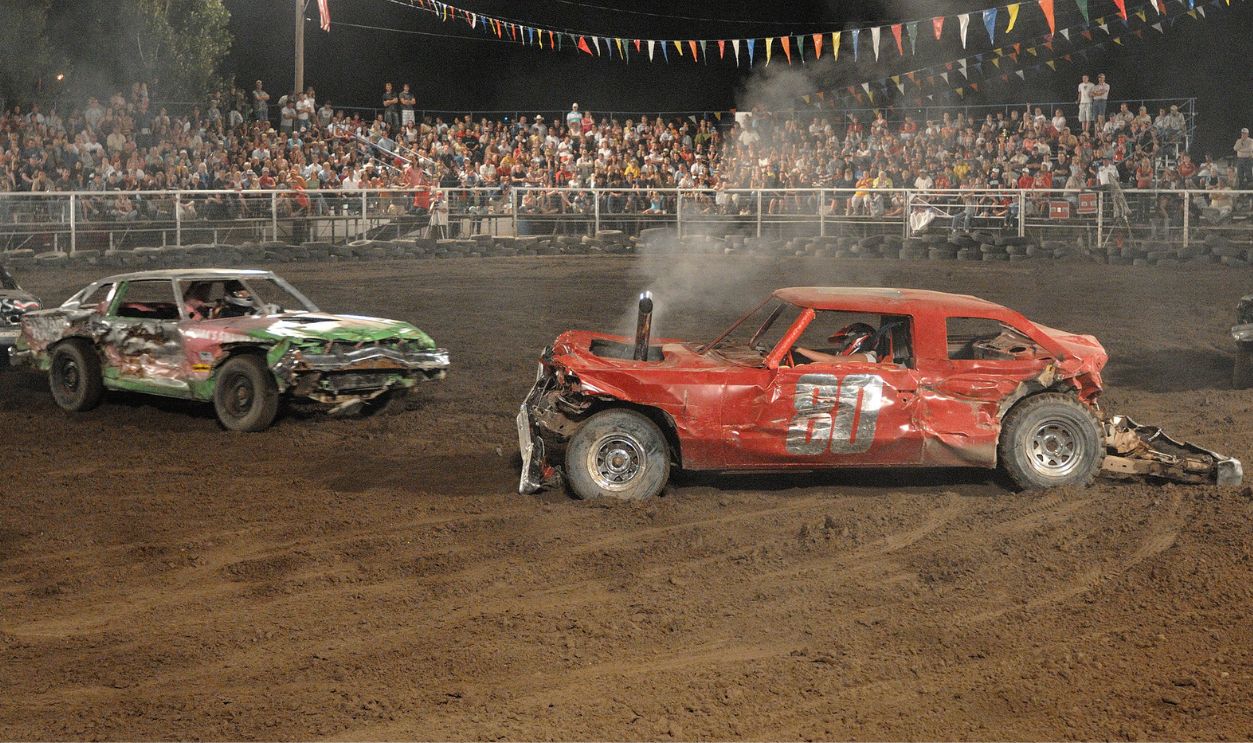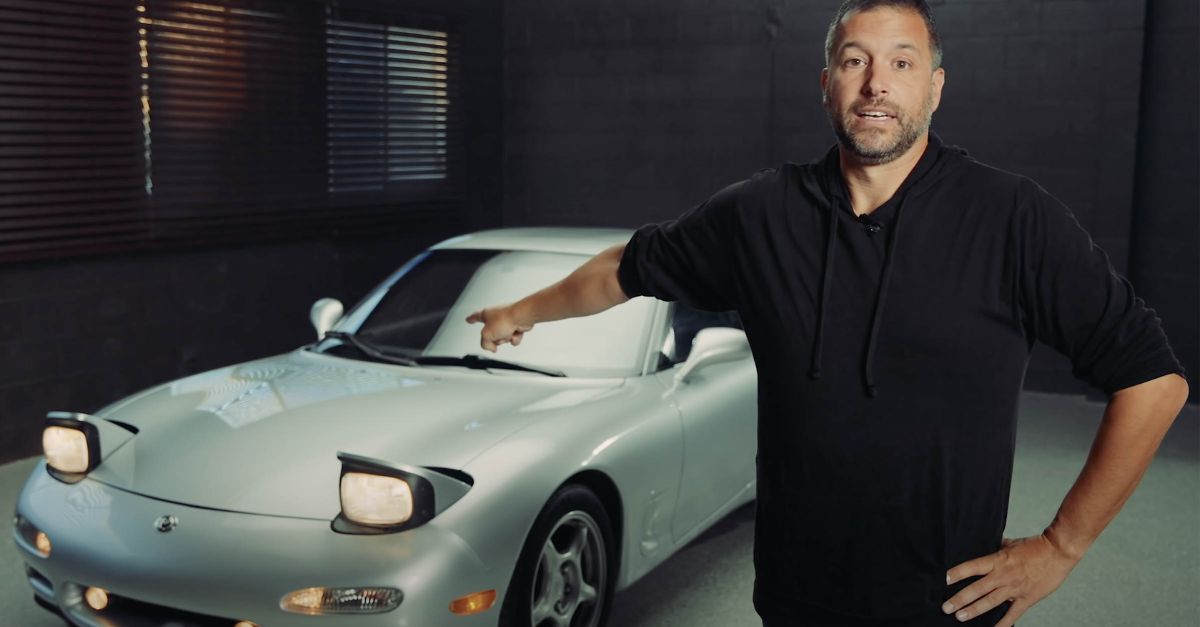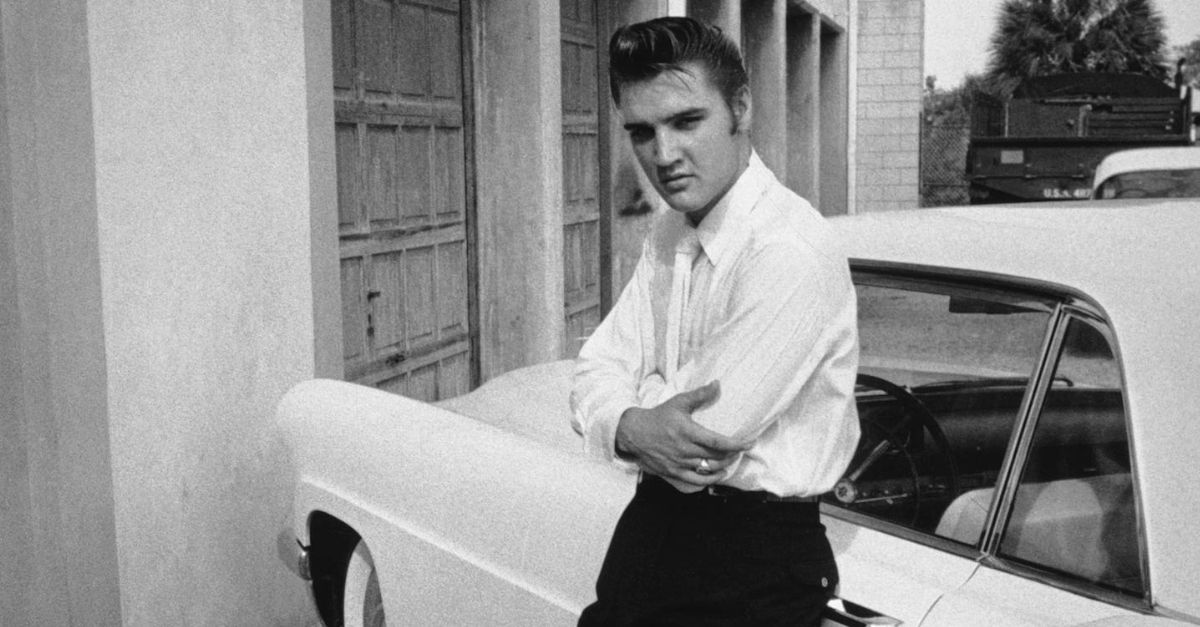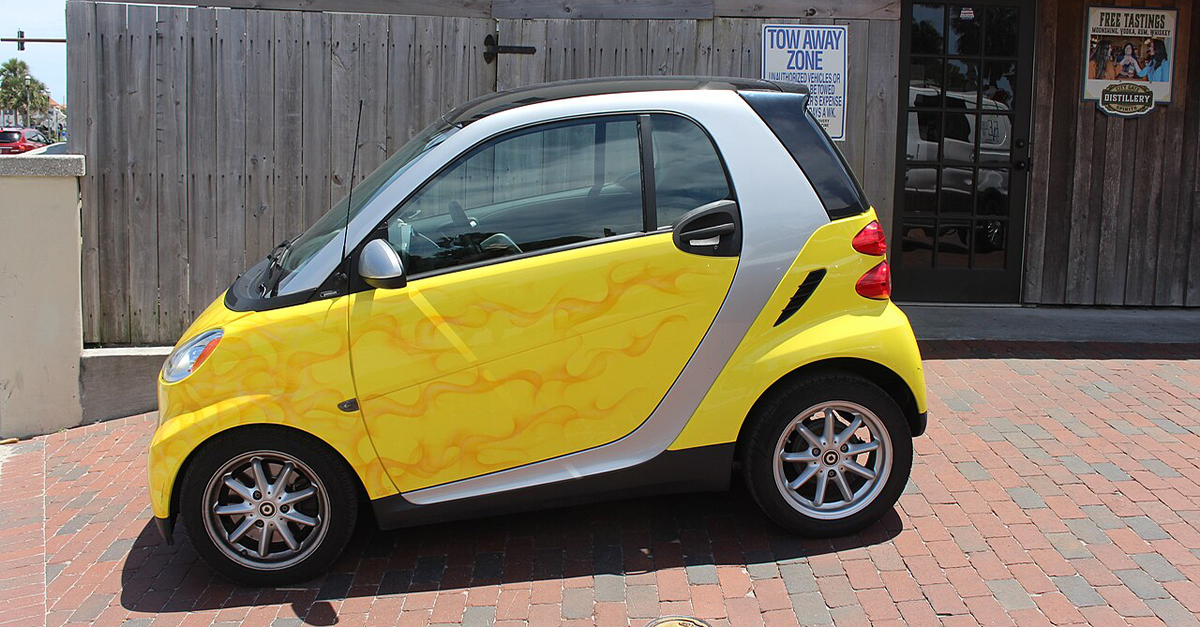The Art Of Glorious Destruction
Few motorsports capture raw chaos and small-town spirit quite like the demolition derby. It’s loud, dirty, and completely addictive. Beneath the twisted steel and clouds of smoke lies a celebration of skill, courage, and a love of controlled mayhem. It’s not just wrecking cars—it’s honoring the art of endurance. Welcome to demolition derby country, where grit rules, metal bends, and the last car running takes the glory.
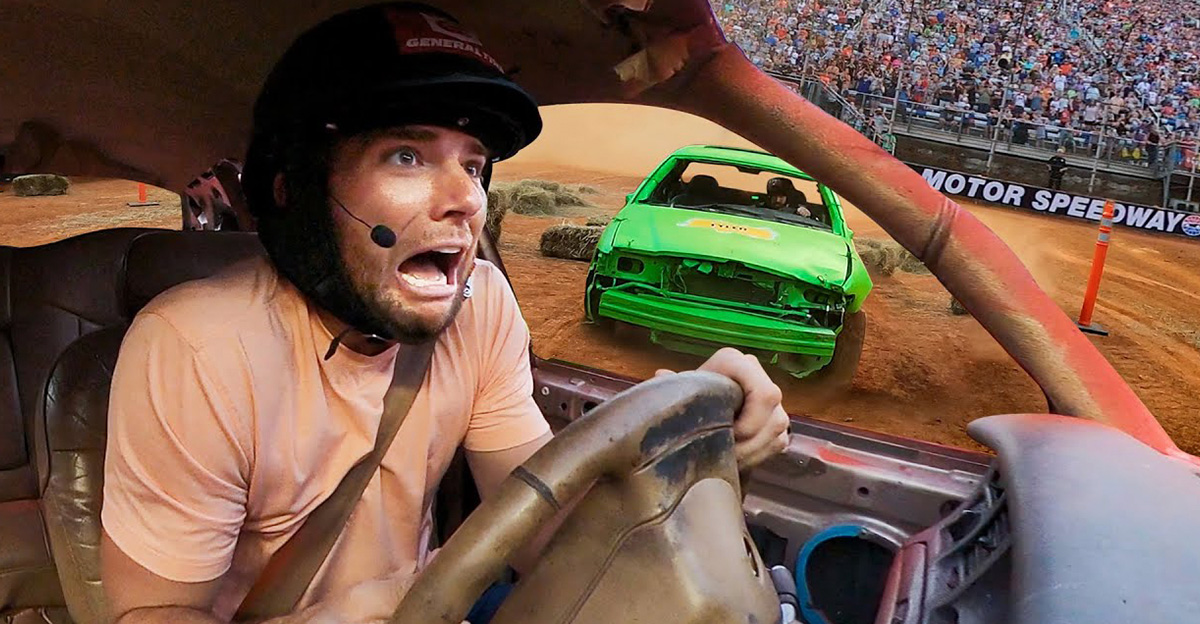
Born From American Ingenuity
Demolition derbies were born from postwar America’s creativity and abundance. In the 1950s, cars were cheap, plentiful, and built like tanks. When the shine wore off, people didn’t junk them—they found new ways to have fun with them. Out of that came informal crash contests, part weekend hobby and part community spectacle. The concept spread fast: destroy, rebuild, repeat.
 Lowenburg at English Wikipedia, Wikimedia Commons
Lowenburg at English Wikipedia, Wikimedia Commons
The First Official Derby
Most historians credit promoter Larry Mendelsohn for organizing the first official derby at Islip Speedway in 1958. Thousands packed the stands, drawn by the pure spectacle of metal meeting metal. Mendelsohn realized he’d stumbled onto something electric—a perfect mix of danger, noise, and showmanship. His success turned a local stunt into a full-blown American phenomenon.
The Golden Age Of Carnage
The 1960s and ’70s were the golden age of demolition derbies. They took over county fairs, racetracks, and rural arenas from coast to coast. Full-sized sedans dominated the dirt, and the air buzzed with excitement, exhaust, and the smell of fried dough. It was affordable, thrilling entertainment—and it belonged entirely to the people.
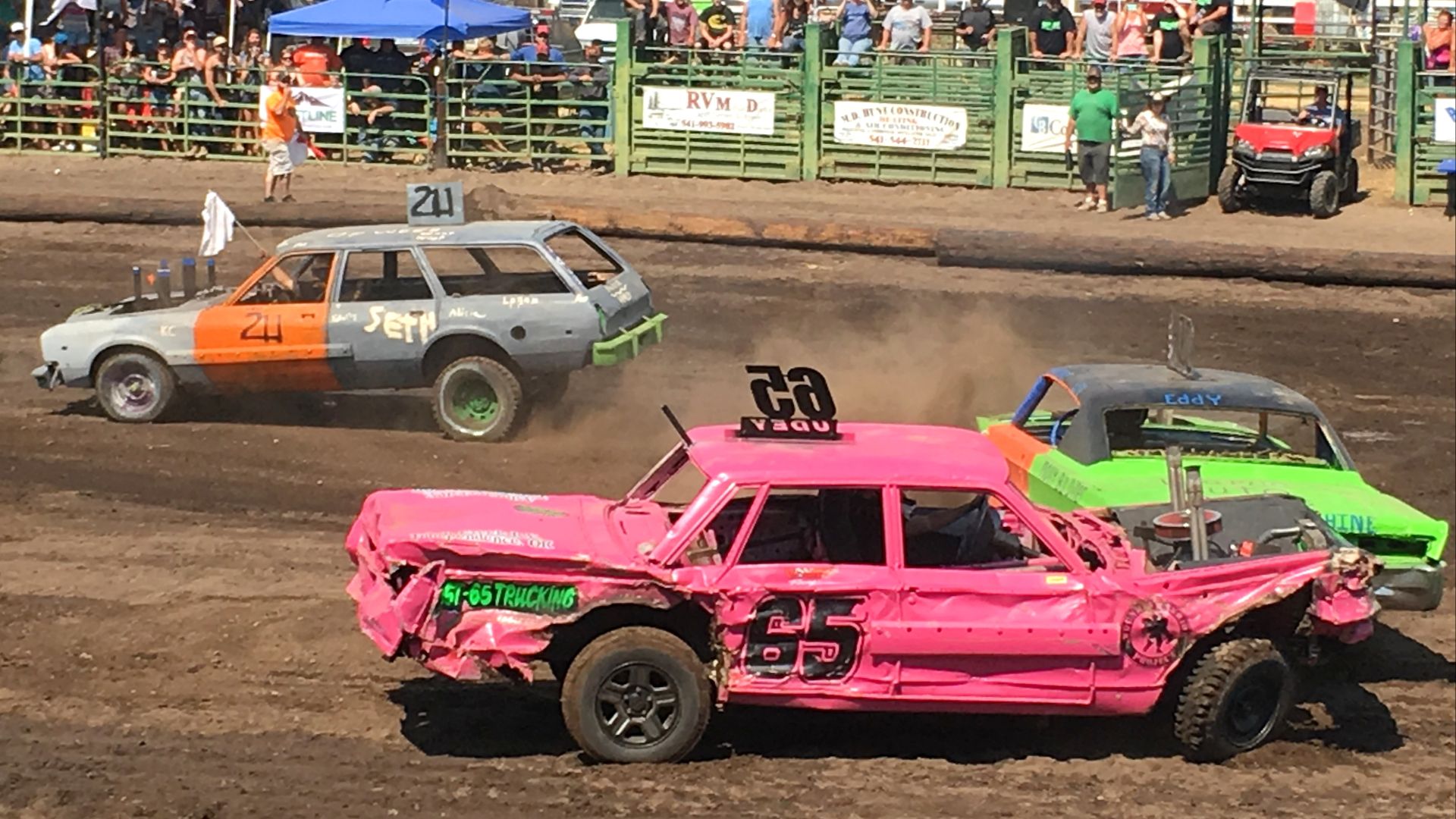 Ian Poellet, Wikimedia Commons
Ian Poellet, Wikimedia Commons
Small-Town America’s Big Show
In small-town America, the demolition derby wasn’t just an event—it was the event. Locals brought their families, cheered for their neighbors, and celebrated every thunderous collision. The fairgrounds filled with laughter, dust, and the unmistakable sound of steel surrendering. It was the kind of community tradition that turned ordinary folks into hometown legends.
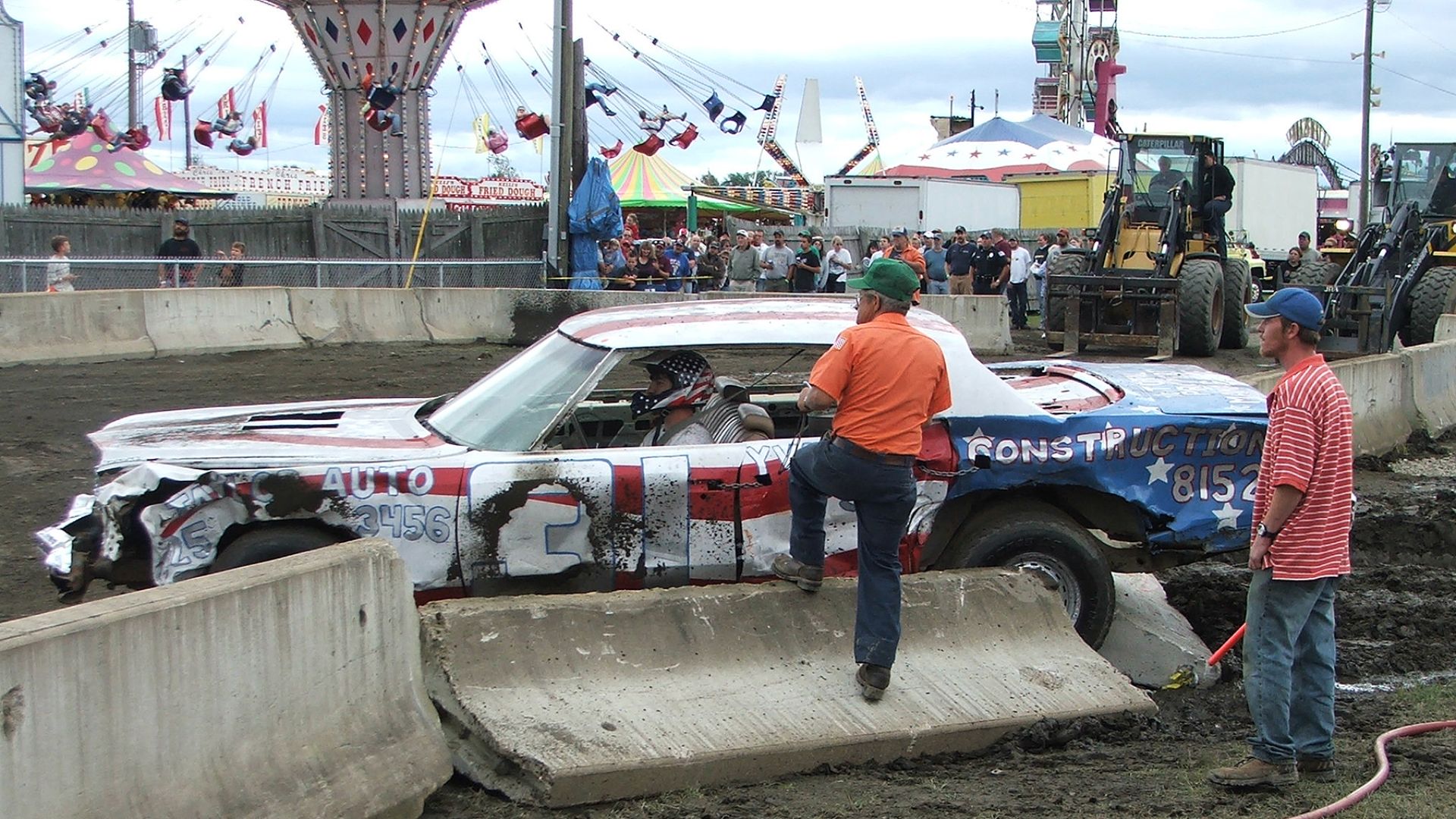 Nathan Wert (User:NathanWert), Wikimedia Commons
Nathan Wert (User:NathanWert), Wikimedia Commons
The Rules Of Wreckage
Derby rules are simple: no hits to the driver’s door, stay strapped in, and never leave the car until told. Beyond that, it’s fair game. Some drivers play defense, others go for chaos. Timing, positioning, and knowing when to strike can make all the difference. Beneath the destruction, there’s real strategy—just hidden under a mountain of crumpled metal.
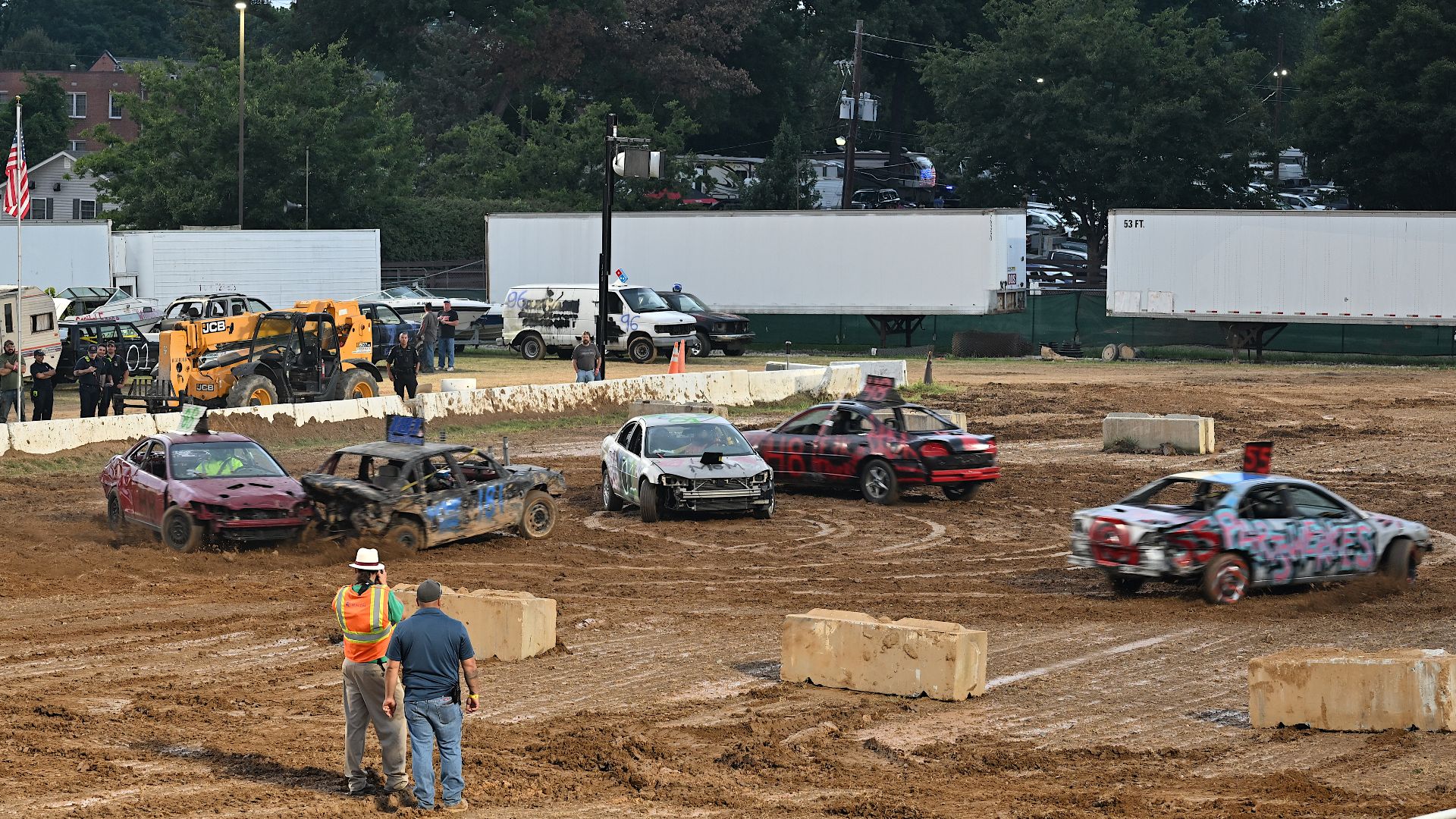 G. Edward Johnson, Wikimedia Commons
G. Edward Johnson, Wikimedia Commons
Building A Battle Car
Turning an old sedan into a derby-ready warrior takes both skill and creativity. Builders strip away glass and trim, weld the doors shut, and reinforce the frame. Roll cages, radiator shields, and homemade fuel-cell setups are standard. Every bolt and weld has a purpose. A good derby car isn’t built to look pretty—it’s built to take a beating and keep crawling forward.
 Molly Des Jardin, Wikimedia Commons
Molly Des Jardin, Wikimedia Commons
Iconic Machines Of The Derby
For years, the kings of the derby world were massive full-frame American sedans—’70s Cadillacs, Lincolns, and Oldsmobiles. They were heavy, mean, and almost indestructible. Drivers loved their raw power and tank-like toughness. These days, compacts and wagons are more common, but those old steel monsters remain the stuff of legend, forever remembered as the ultimate derby machines.
The Derby Driver Spirit
Derby drivers are half mechanic, half adrenaline junkie. Most grew up watching from the stands before getting behind the wheel themselves. They spend weeks prepping cars they know they’ll likely destroy within minutes. But for them, that’s part of the thrill—the rush of fire, noise, and pure chaos that makes all the late nights worth it.
Family Traditions
In many small towns, demolition derby runs in the bloodline. Parents pass down their tools, tricks, and trophies to the next generation. You’ll often find brothers, cousins, and even parents and kids competing against each other in the same event. It’s a family tradition forged in sweat, steel, and love of the crash.
The Rise Of Women Drivers
What started as a male-dominated sport now features some of its fiercest competitors behind the wheel—women. Once relegated to “Powder Puff” races, female drivers now compete head-to-head with everyone else. They bring the same tenacity and skill as anyone out there, often proving they can hit harder, last longer, and win bigger.
The Safety Revolution
In the early days, safety gear was an afterthought—sometimes just a helmet and hope. But over time, regulations evolved. Today, drivers wear fireproof suits, full-face helmets, and multi-point harnesses. Cars are inspected carefully, and medics stand ready nearby. The chaos remains, but it’s a smarter, safer kind of chaos
The Soundtrack Of Destruction
There’s no mistaking the sound of a demolition derby. Engines roaring. Metal screaming. Fans hollering. It’s an orchestra of noise, dust, and fury that hits you in the chest. The air smells of oil and victory. For true fans, that soundtrack is pure music—raw and unapologetic.
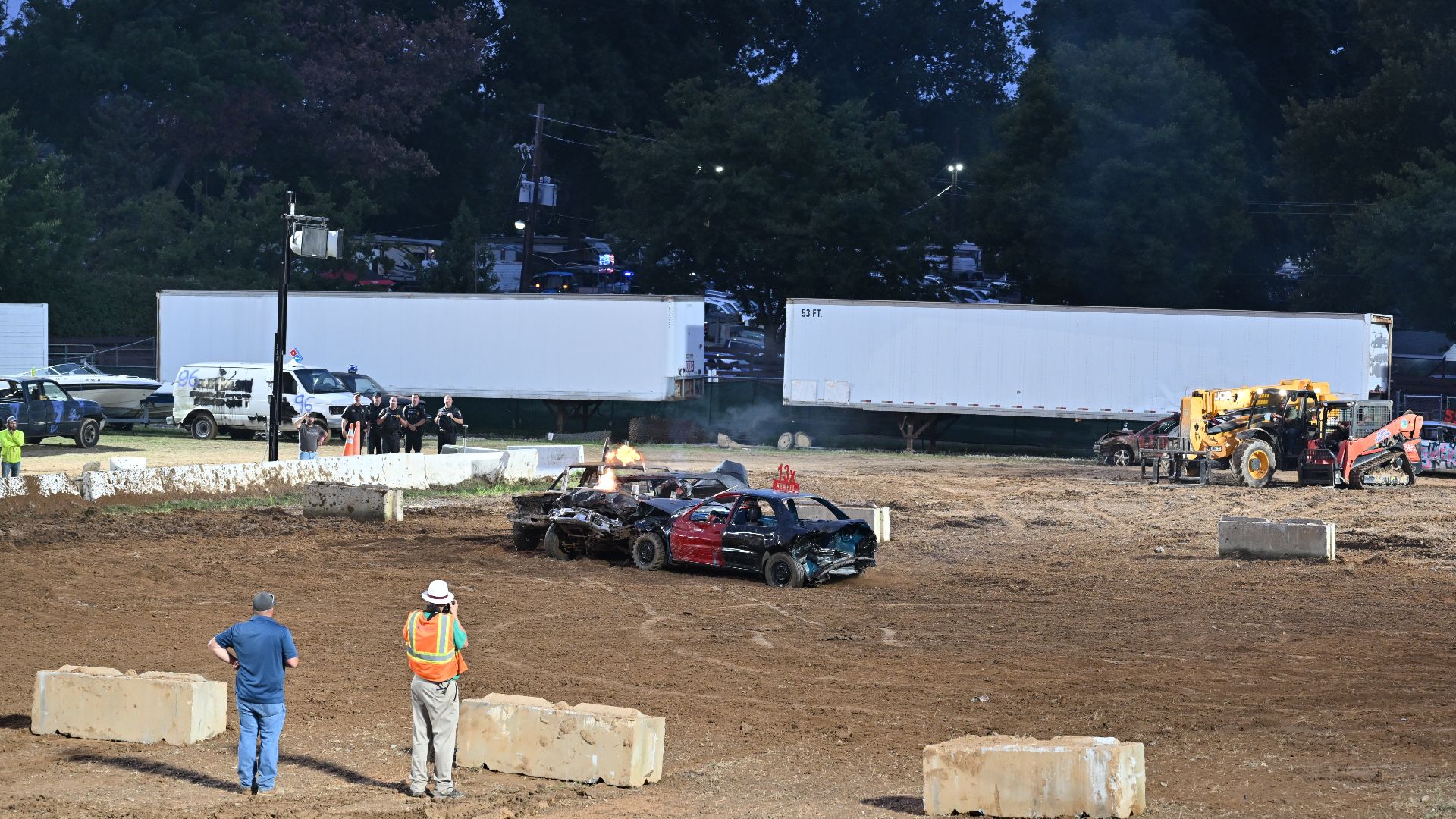 G. Edward Johnson, Wikimedia Commons
G. Edward Johnson, Wikimedia Commons
From Local Fairs To TV Screens
By the 1970s, derbies were too big to stay local. ABC’s Wide World of Sports brought them to living rooms nationwide, turning small-town drivers into national heroes. Millions tuned in to watch cars crumble, and the demolition derby officially became part of American pop culture.
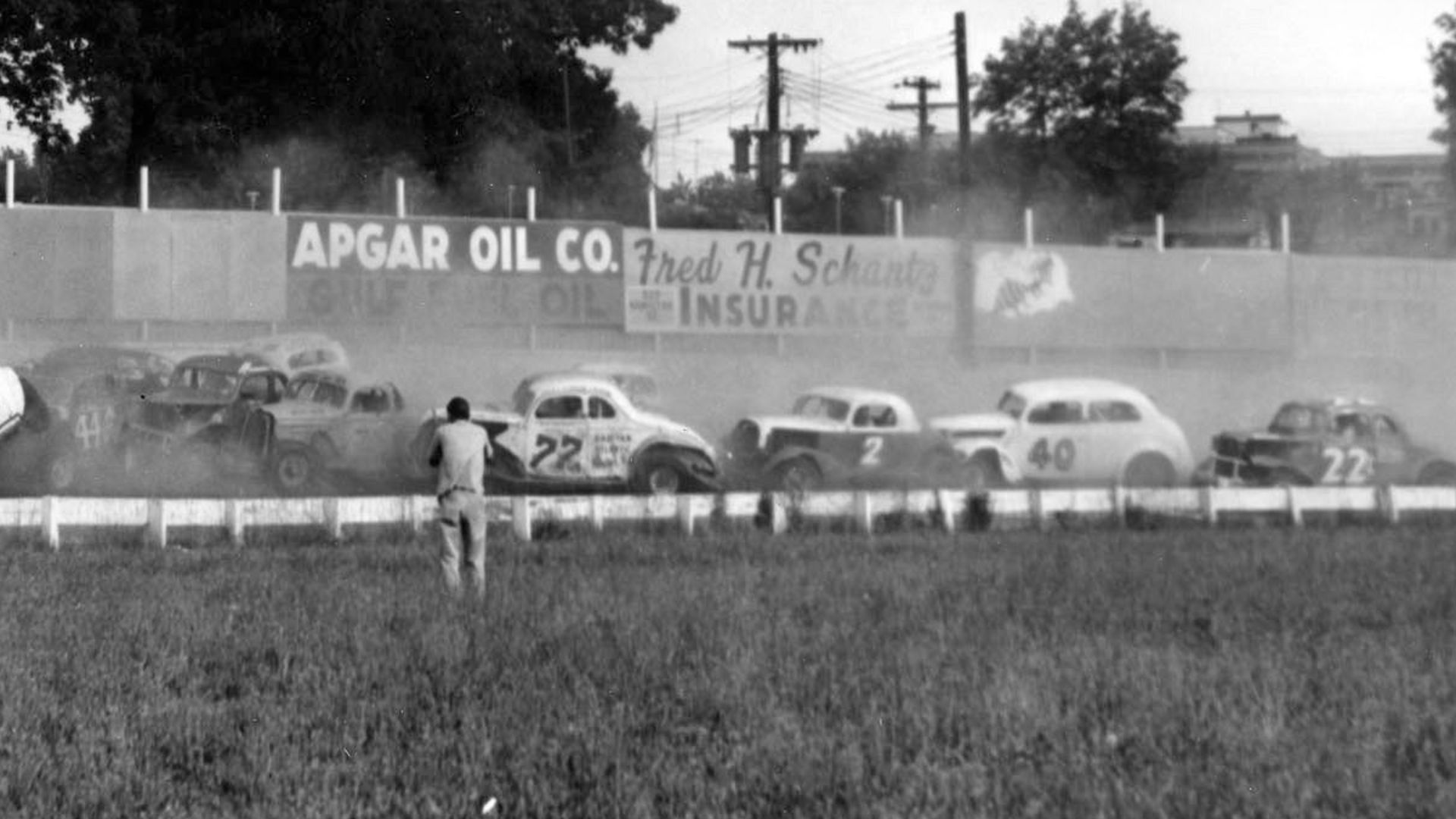 Self Scanned, Wikimedia Commons
Self Scanned, Wikimedia Commons
The Promoters Who Made It Happen
Promoters like Larry Mendelsohn and Bob “Crash” Clark turned derbies into organized chaos. They knew that people didn’t just want destruction—they wanted stories, rivalries, and drama. Their events drew massive crowds, turning humble wreck-fests into major productions that shaped the sport’s future.
The Culture Of Creativity
Derby cars aren’t just machines—they’re rolling art projects. Drivers paint wild designs, spray slogans, and slap on goofy names before heading into battle. Every car reflects its builder’s personality, from bright flames to cartoon faces. Even after being mangled, those colors and messages peek proudly through the bent steel.
County Fair Royalty
At county fairs, the demolition derby is the main event. When the lights come on and engines start, everything else stops. Crowds fill the bleachers, waving flags, eating corn dogs, and roaring for their favorites. For many, it’s the heartbeat of the fair—a perfect mix of noise, danger, and nostalgia.
The Fans Who Live For It
Demolition derby fans are a different breed—loyal, loud, and full of heart. They follow local heroes across state lines, debate frame strength like experts, and know every driver’s signature move. For them, it’s not about who crashes the hardest—it’s about celebrating the guts it takes to show up and compete.
Strategy Amid The Chaos
It might look like pure mayhem, but winning a derby takes brains. Protect your radiator, attack at angles, and keep your rear end strong. Drivers study their opponents, adapt on the fly, and hit with purpose. The best competitors know it’s not just destruction—it’s controlled demolition.
Legendary Moments Of Mayhem
Over the years, derbies have produced moments that live in legend: a car engulfed in flames still charging forward, a rookie toppling a veteran, or a one-hit comeback victory. These stories spread through the community like campfire tales—each one a reminder of how unpredictable and thrilling the sport can be.
The Decline Of The Big Cars
As the 1990s rolled in, big old sedans disappeared from junkyards. Drivers had to adapt, switching to smaller, front-wheel-drive cars. Some lamented the change, but the crashes didn’t get any less exciting. If anything, compact derbies brought more speed and surprise, proving that the spirit of destruction doesn’t depend on size.
The Modern Derby Scene
Today, demolition derbies are bigger and better organized than ever. National tours, sponsorships, and social media exposure have lifted the sport to new heights. Safety, technology, and prize money have all grown. But despite the upgrades, the soul of the derby—the backyard ingenuity and fearless fun—remains exactly the same.
State Fairs And Super Derbies
The biggest derbies in America happen at state fairs in places like Iowa, Ohio, and Indiana. These “Super Derbies” draw hundreds of competitors and serious cash prizes. Drivers spend months prepping cars and hauling them across the country for one weekend of glory. Winning one earns you bragging rights for life.
 David E. Lucas, Wikimedia Commons
David E. Lucas, Wikimedia Commons
The Rise Of The Compact Class
Compact derbies have exploded in popularity. They’re cheaper, faster, and easier to build. Crowds love watching small cars slam into each other with just as much heart as the old giants. These lightweight machines prove that demolition derby isn’t about horsepower—it’s about heart, timing, and guts.
 Brett L. Lloyd, Wikimedia Commons
Brett L. Lloyd, Wikimedia Commons
The Derby Builders’ Community
Thanks to the internet, derby builders from all over now connect online. They share build tips, post crash videos, and argue passionately about rules and strategy. It’s a digital garage that stretches across the country—proof that even in destruction, there’s community and collaboration.
Green Derbies And Eco Awareness
Even destruction can be responsible. Modern derbies now require all fluids to be drained before competition. Cars are recycled afterward, and safety crews keep events environmentally clean. It’s a new twist on an old tradition—showing that even a sport built on chaos can evolve responsibly.
The Derby Documentary Boom
Filmmakers and YouTubers have started capturing derby life like never before. Documentaries highlight the drivers, families, and friendships behind the smoke. Viewers get to see the human side of destruction—the laughter, loss, and pride that fuel this strange and wonderful world.
Why We Love Watching Things Break
There’s something deeply human about loving destruction when it’s harmless. The demolition derby taps into that urge—the joy of chaos without consequence. It’s loud, messy, and absurdly beautiful. Watching cars smash and survive reminds us that resilience can look a little rough around the edges.
The Future Of The Derby
The derby’s future looks bright—and maybe a little electric. EVs might join the ring one day, quietly crashing where V8s once roared. But no matter what powers the cars, the soul of the sport will stay the same: loud crowds, fearless drivers, and pure, joyful destruction.
Steel, Smoke, And Soul
Demolition derbies aren’t just about wrecking cars—they’re about resilience, creativity, and community. Every dent tells a story of courage, every crash echoes with tradition. In an age obsessed with perfection, derbies remind us there’s beauty in imperfection. Steel may bend, engines may die, but the spirit of the derby lives on forever.
You May Also Like:
Easy DIY Car Repairs Every Driver Should Know
What's The Deal With That New Electric Car With The "V" Logo We're Seeing Everywhere These Days?


